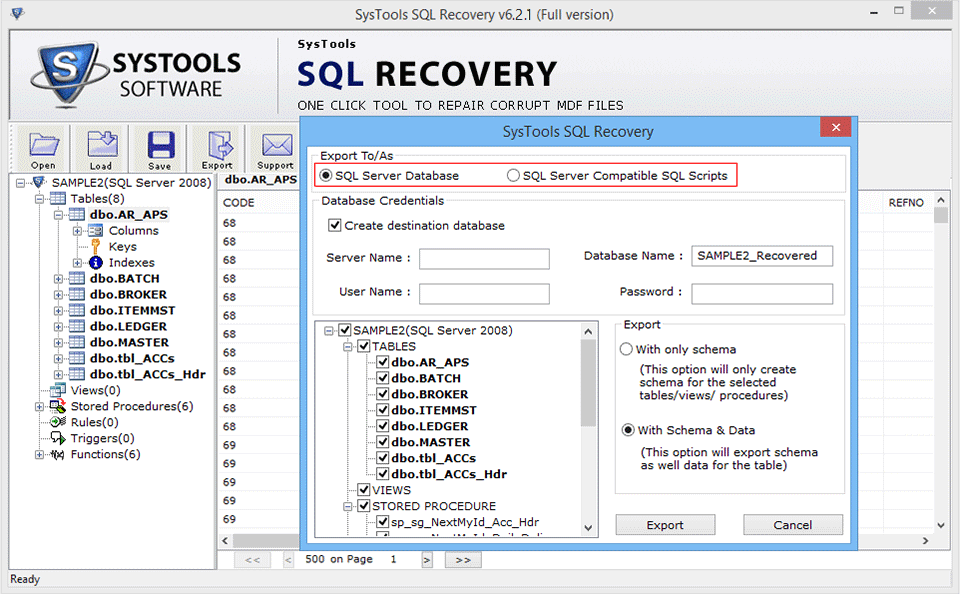Two Saving Modes For Exporting Database Objects
Amongst the multiple ways of storing SQL Server database are SQL Server Database and SQL Server Compatible Script files respectively. SQL databases are accessible directly on the Server while scripts files have to be imported on a Server to use contents within it.
How Things Work?
Database recovery is executed via special algorithms of an astounding quality; integrated within the tool. However, for saving recovered copy of database; software supplies its users with two saving modes option:

SQL Server Databases: When available with a live SQL Server environment you can directly save the database on the Server and access it in real-time. Simply provide credentials of the respective SQL Server and proceed saving.
SQL Server Compatible Scripts: The software has a provision for users not available with a live SQL Server on the same machine. Saving database into an SQL Server compatible Script file offers you the freedom of restoring the database later in the available Server.
Benefit Yourself With The Two Saving Modes
Saving database as a SQL Server database directly on an available SQL Server, saves you from the time consumed in saving and importing the file; nonetheless, saving as scripts has its own set of benefits too.
Saving a database in script file gives you the freedom of moving the file to a machine configured with SQL Server. And the database from script file can then be restored when there is Server availability. Best thing about script files is that, they can be restored on SQL Server regardless of its version due to their universal compatibility.
NOTE: Once the recovery has been performed and database is exported as script file in the mentioned target location, software shows a new window instructing the steps to restore elements from a script file one by one.